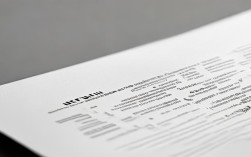雅思写作考试中,小作文(Task 1)要求考生描述图表、流程图或地图等信息,许多考生在描述数据变化时容易犯时态错误,导致分数降低,本文将分析常见的时态错误,并提供实用的解决方法,帮助考生提升写作准确性。

雅思小作文的时态基本原则
雅思小作文的时态选择取决于图表所呈现的时间信息,时态使用遵循以下规则:
-
过去时:如果图表数据来自过去某一时间段(如1990-2000年),使用过去时(simple past)。
- 例:The number of tourists increased from 2 million in 1995 to 5 million in 2000.
-
现在时:如果图表展示的是当前状态或无时间信息,使用一般现在时。
- 例:The diagram shows the process of recycling plastic bottles.
-
将来时:如果图表涉及未来预测,使用将来时(will + 动词原形)或将来完成时。
- 例:By 2050, renewable energy will account for 50% of total energy production.
常见时态错误及修正
错误1:混淆过去时与现在时
许多考生在描述历史数据时错误地使用现在时,导致时间表达混乱。

- 错误:The graph shows that the population grows rapidly between 1980 and 2000.
- 正确:The graph showed that the population grew rapidly between 1980 and 2000.
修正方法:检查图表时间范围,确保动词时态与数据时间一致。
错误2:忽略时间状语的影响
时间状语(如“in 2000”“by 2025”)直接影响时态选择,但部分考生未注意这一点。
- 错误:By 2030, the demand for electric cars increased significantly.
- 正确:By 2030, the demand for electric cars will have increased significantly.
修正方法:遇到“by + 未来时间”时,优先使用将来完成时(will have + 过去分词)。
错误3:错误使用现在完成时
现在完成时(have/has + 过去分词)适用于强调动作对现在的影响,但部分考生在描述过去数据时误用。
- 错误:The sales of smartphones have risen steadily from 2010 to 2020.
- 正确:The sales of smartphones rose steadily from 2010 to 2020.
修正方法:如果时间区间已结束(如2010-2020),使用过去时而非现在完成时。

如何避免时态错误
技巧1:先确定图表时间框架
在动笔前,先观察图表的时间信息:
- 是过去、现在还是未来?
- 是否有明确的时间节点(如“in 1995”“by 2050”)?
技巧2:固定句式搭配
使用固定句式可减少时态错误概率,
- 描述趋势:The figure increased from X to Y between A and B.
- 对比数据:While A was higher in 2000, B overtook it by 2010.
技巧3:检查时间状语一致性
确保时间状语与动词时态匹配:
- “From 2000 to 2010” → 过去时
- “By 2030” → 将来时或将来完成时
实战练习与解析
The graph below shows the percentage of people using public transport in a city between 1980 and 2020.
错误范例:

- The usage of public transport is highest in 1990. (错误:应用过去时)
- By 2020, the rate has reached 70%. (错误:时间区间已结束,应用过去时)
正确版本:
- The usage of public transport was highest in 1990.
- By 2020, the rate reached 70%.
个人观点
雅思小作文的时态错误看似是小问题,但直接影响评分标准的“语法准确性”和“任务完成度”,通过系统训练和针对性修正,考生可以显著减少这类错误,建议在平时练习中多分析范文的时态使用,并养成检查时间状语的习惯,只要掌握核心规则,时态问题完全可以避免。



